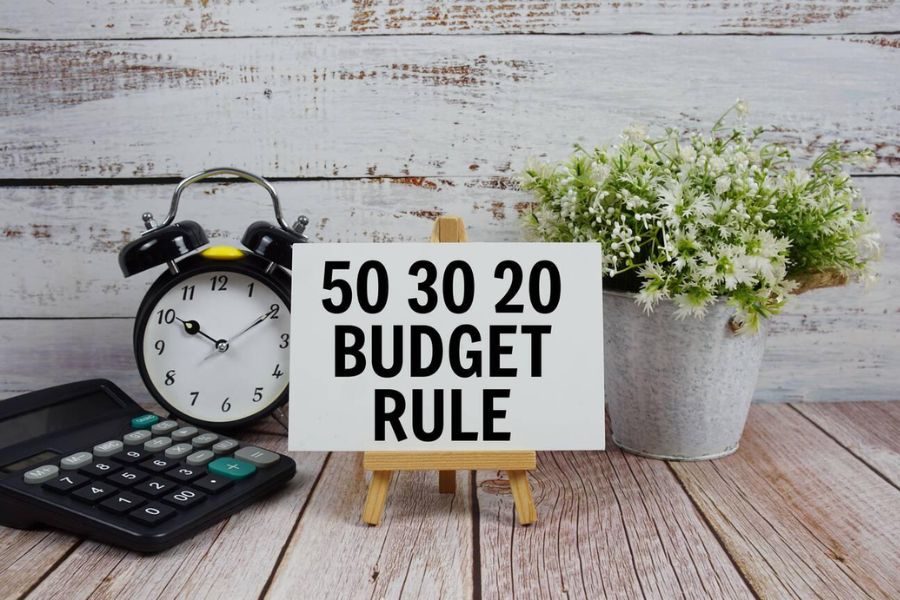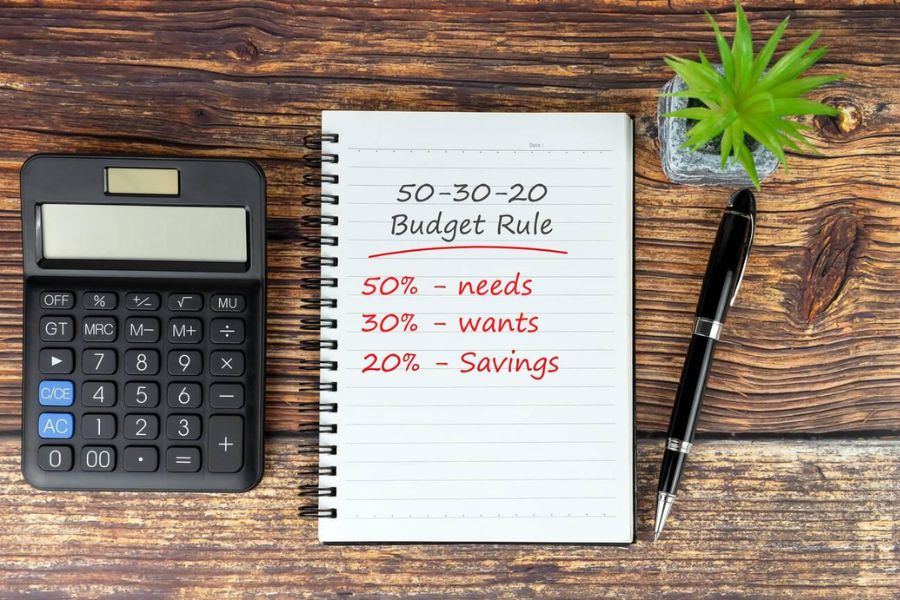Managing money can feel like a giant puzzle. The 50/30/20 rule offers a simple way to start piecing it together.This popular method splits your income into three parts: 50% for needs, 30% for wants, and 20% for savings and debt payments. I decided to give it a real shot for six months.

Let me walk you through what happened, what I learned, and how you can use this rule to transform your own finances.
Key Takeaways
- The 50/30/20 rule helped me save consistently and pay off debt faster than any method I’d tried before.
- The first two months felt tough, but budgeting became automatic by month three.
- Unexpected expenses will test your budget, so building an emergency fund is essential.
Understanding the 50/30/20 Rule
The 50/30/20 budget rule splits your after-tax income into three buckets: 50% for needs, 30% for wants, and 20% for savings and debt payments. Elizabeth Warren made this method popular because it’s simple enough to follow without tracking every penny.
Origins of the 50/30/20 Budget Rule
Elizabeth Warren and her daughter Amelia Warren Tyagi introduced this rule in their book “All Your Worth.” Warren, a bankruptcy law professor, wanted to help families avoid money struggles.
She studied thousands of families and noticed that those who followed this split were more likely to stay out of financial trouble. The rule’s genius lies in its simplicity. Instead of dozens of categories, you only have three.
Warren designed it for regular people, not financial experts. Whether you make $30,000 or $100,000 a year, you can use this method.
How the Percentages Work: Needs, Wants, and Savings

Needs (50%) are essentials you can’t live without. Think rent, groceries, utilities, insurance, and minimum debt payments. I had to get brutally honest about what counted as a need. For example, transportation to work is a need, but Netflix isn’t.
Wants (30%) are the fun things—dining out, hobbies, entertainment, and shopping. This category let me enjoy life without guilt. I still bought coffee and went to movies, just with more intention.
Savings (20%) is for your future self. Emergency funds, retirement accounts, and extra debt payments all count here. If you don’t have an emergency fund, start there. After that, focus on retirement and tackling high-interest debt.
How After-Tax Income Shapes Your Budget
After-tax income is what lands in your bank account after taxes and deductions. This is the number you budget with.
If you make $5,000 before taxes but take home $3,800, use $3,800 for your calculations.
Here’s how the rule breaks down in real dollars:
- $3,000 monthly: $1,500 needs, $900 wants, $600 savings
- $5,000 monthly: $2,500 needs, $1,500 wants, $1,000 savings
If you’re self-employed, set aside money for taxes first, then apply the percentages to what’s left.
Adjusting the Rule for Your Financial Situation
Not everyone fits perfectly into the standard percentages. Living in a high-cost area? You might need 60/30/10 or 55/25/20.
If you earn more, you can put extra toward savings—maybe 50/20/30. Have a lot of debt? Focus your 20% on paying it off for a guaranteed return. Low income? Start with 60/35/5 and work up. Building the habit matters more than hitting perfect numbers.
The real key is to make the rule fit your life—not the other way around.
My Six-Month Journey With the 50/30/20 Rule
Starting the 50/30/20 budget felt like learning a new language. Tracking my spending with simple tools made all the difference. Every month brought new challenges and forced me to tweak my approach, especially when unexpected costs popped up.

Getting Started: Setting Up My Budget and First Impressions
First, I calculated my after-tax income. It came to $3,200 per month.
Here’s how I broke it down:
- Needs (50%): $1,600 for rent, groceries, utilities, and car payments
- Wants (30%): $960 for dining out, entertainment, and shopping
- Savings (20%): $640 for my emergency fund and debt payments
The first week was eye-opening. I realized I was spending almost $400 a week on things I didn’t need.
My wants category was way over budget. Restaurant meals, subscriptions, and impulse buys at Target added up fast.
I made cuts right away. I canceled three unused streaming services and started cooking more at home.
Tracking Spending: Tools and Habits That Helped
I downloaded Mint as my main budgeting app. It automatically categorized most transactions and sent me alerts when I neared my limits. Every Sunday, I spent 15 minutes reviewing my spending. This habit kept me accountable.
I also used a simple Google Sheets template to plan upcoming expenses and monitor my 20% savings goal.
My weekly routine looked like this:
- Checked account balances
- Categorized any missed transactions
- Planned meals to avoid overspending on food
- Set spending limits for the week
Cash envelopes helped with discretionary spending. I withdrew my weekly “wants” money in cash and stopped spending when it ran out.
Month-by-Month Adjustments and Challenges

Months 1-2: I struggled to stay within my wants category and underestimated my grocery budget.
Month 3: Meal planning saved me about $200 a month on food and dining out.
Month 4: A friend’s wedding meant travel expenses. I borrowed from the next month’s wants budget to cover it.
Month 5: My car needed new tires, so I bumped needs to 55% and dropped wants to 25% for two months.
Month 6: Budgeting felt automatic. I knew my limits without checking the app constantly.
Flexibility became my best friend. Real life rarely fits into perfect percentages.
Dealing With Unexpected Expenses and Emergencies
My car broke down in month three. The $800 repair could have wrecked my budget.
Luckily, I’d been building my emergency fund with $200 a month. That fund covered the repair without touching my wants or needs money.
Other surprise expenses included a $150 medical copay and a $300 vet bill for my dog.
I started budgeting for “irregular” expenses too—oil changes, birthday gifts, annual subscriptions. By month six, I set aside an extra $50 a month for these costs.
Even a small emergency fund made me feel secure. I stopped worrying about surprise bills.
Results and Financial Lessons Learned
Six months in, I saw real progress. My debt shrank, my savings grew, and my spending habits changed.
Achieving Savings and Debt Repayment Goals
By month four, I exceeded my 20% savings goal. With a $4,200 monthly income, I needed to save $840, but I averaged $920.
Here’s how my savings stacked up:
- Emergency fund: $3,200
- Retirement account: $1,850
- Short-term goals: $1,000
I paid off $4,100 in credit card debt in six months. Before, I only made minimum payments.
Automatic transfers helped. I moved money to savings on payday, making it harder to spend.
Setting up separate accounts for each goal kept me organized.
Balancing Needs and Wants Without Sacrifice
The 30% wants category taught me to spend with intention. I had $1,260 a month for fun—tight, but doable.

I made smart swaps:
- Two nice restaurant dinners a month instead of weekly takeout
- Movie nights at home with friends
- Waiting 24 hours before buying non-essentials
My needs averaged 48% of my income. I cut costs by switching to a cheaper phone plan and shopping at discount grocery stores. This freed up more money for wants and savings.
Many things I thought were needs turned out to be wants in disguise.
How My Financial Mindset Changed
My relationship with money improved. Guilt around spending disappeared because I had a plan.
I became more mindful of every purchase. Before buying, I asked, “Is this a need, a want, or for savings?”
Planning became second nature. I checked my budget weekly and made better decisions.
Personal finance felt manageable with just three categories. This simplicity kept me motivated.
Watching my savings grow made long-term goals feel possible.
What I’d Do Differently Next Time
If I started over, I’d set a smaller emergency fund goal first. Trying to save three months of expenses right away felt overwhelming.
Here’s what I’d change:
- Track expenses for one month before starting
- Adjust percentages based on real spending
- Build a bigger buffer for surprises
- Use cash for wants to avoid overspending

I wish I’d planned better for irregular expenses like car repairs and medical bills. I might try a 45/25/30 split next time. Saving 30% would speed up debt payoff and retirement. My needs don’t require a full 50%.
Starting gradually would have made the transition easier.
Frequently Asked Questions
People often ask me about the 50/30/20 rule after hearing my story. These questions cover everything from how it compares to other budgeting methods to how to handle real-life curveballs.
What are the key differences between the 50/30/20 and 70/20/10 budgeting rules?
Let’s break it down:
How You Divide Your Money: The 50/30/20 rule splits your take-home pay into 50% for needs, 30% for wants, and 20% for savings.The 70/20/10 rule combines needs and wants into 70%, sets aside 20% for savings, and allocates 10% for giving or donations.
Clarity in Spending: I found the 50/30/20 rule easier to follow. Separating needs from wants helped me spot exactly where I was overspending.The 70/20/10 rule might suit you if you have a lower income or high fixed costs. However, it doesn’t push you to think about the difference between needs and wants.
How can I calculate my expenses using the 50/30/20 rule?
Start With Your Take-Home PayUse your income after taxes and deductions. For example, if you bring home $4,000 per month, use that number.
Break Down the Percentages
Needs: $4,000 x 0.50 = $2,000. This covers essentials like rent, groceries, utilities, and minimum debt payments.
Wants: $4,000 x 0.30 = $1,200. Think dining out, entertainment, hobbies, and subscriptions.
Savings: $4,000 x 0.20 = $800. This goes to your emergency fund, retirement, or extra debt payments.
I recommend using a budgeting app. Tracking each category in real time helped me stay within my limits.
Real-Life Wins: Success Stories Using the 50/30/20 Rule
Paying Off DebtI met Sarah, who used the 50/30/20 rule to clear $15,000 in credit card debt. She focused her entire 20% savings on debt payments and became debt-free in two years.
Adapting for High RentMy friend Mike lived in a city with sky-high rent. He adjusted the rule to 60% for needs, 25% for wants, and 15% for savings. Flexibility made it work for him.
Building Savings from ScratchLisa started with nothing in savings. By sticking with the rule, she built a $10,000 emergency fund in just 18 months.
Saving for Big GoalsTom wanted to buy a house. He tweaked the percentages to 50/20/30, putting more toward savings to reach his down payment faster.
Does the 50/30/20 Rule Work With Retirement Accounts Like a 401k?
Absolutely! Your 401k contributions count toward the 20% savings category.
If your employer deducts 401k contributions before taxes, include those amounts in your calculations. Don’t forget to count employer matches—they’re part of your savings too.
Personally, I put 10% of my gross income into my 401k and counted it toward my 20% savings goal. The rest went to other savings and paying off debt.
Some people choose to max out their 401k first, then use the rule on what’s left. Find what works for you.
Common Challenges With the 50/30/20 Budgeting Rule
Unexpected ExpensesSurprise bills—like medical costs or car repairs—can derail your budget. I faced this more than once.
High Housing CostsIf rent eats up a big chunk of your income, hitting the 50% needs target feels impossible. Adjusting the percentages helped me stay realistic.
Needs vs. Wants ConfusionSorting needs from wants is tricky. Is Netflix a need? What about eating out for lunch at work? I had to get honest with myself.
Variable IncomeFreelancers and commission-based workers find it tough to stick to fixed percentages. Using an average income over several months worked better for me.
Debt Payments Taking OverSometimes debt payments swallow up your savings category. I focused on debt first before building my emergency fund.
How realistic is the 50/30/20 rule for the average person’s financial situation?
The 50/30/20 rule works best for people with middle to higher incomes. It assumes you can cover your needs with just 50% of your income.
In my own experience, I found this rule realistic after making some adjustments. However, people with very low incomes might need 70% or more just for basic needs.
Living in a high-cost area makes this rule harder to follow. If you live in an expensive city, housing alone might take 40-50% of your income.
As your income grows, following the rule gets easier. When I received a raise during my six-month trial, sticking to the percentages became much more manageable.
If you have significant debt, you might need to adjust the rule for a while. Focusing 30% of your income on debt payments instead of wants can help you pay it off faster.



